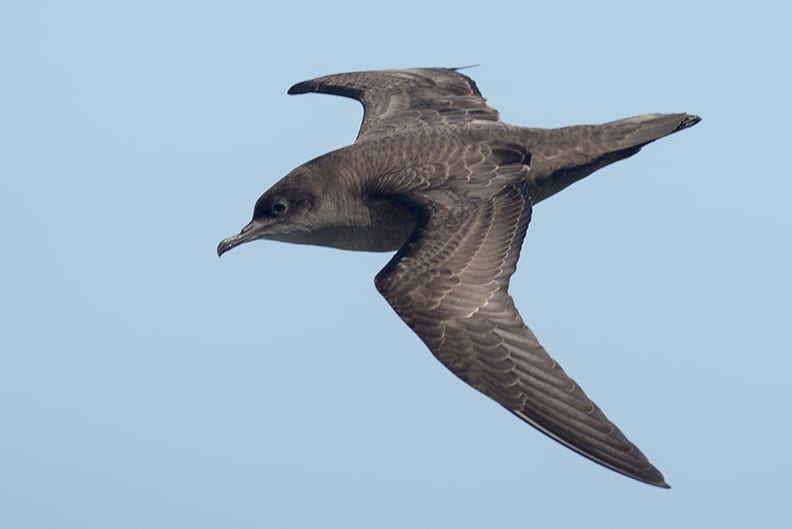
Thousands of Short-tailed Shearwater seabirds have died in Alaska this summer of apparent starvation. They are likely victims of warming ocean temperatures that have impacted their ability to get enough food, say biologists with the U.S. Fish and Wildlife Service.
“We don’t know for sure, but the very warm temperatures may have something to do with the apparent lack of prey,” said Kathy Kuletz, a wildlife biologist and seabird section lead with the USFWS in Anchorage.
“Shearwaters like to feed where there is a lot of upwelling and fronts caused by different water masses,” she said. “Why they are not finding enough food is not clear. My understanding is with warm waters there is less productivity. Some zooplankton species more prevalent in warm water are not as nutritious.”
An upwelling of seawater is a process in which deep, cold water rises toward the surface, often where winds blow along the coastline. The wind causes the water at the ocean surface to move perpendicular to it, away from the coast, because of a process called Ekman transport. When surface water moves away from the coast, water from deeper in the ocean rises up to take its place. Short-tailed Shearwaters forage mostly by diving from the surface of the water or by plunging from a few feet above the surface and may dive as deep as 70 meters below the surface, but usually about 40 meters, Kuletz said.
“They are quite versatile,” she said.
Short-tailed Shearwaters also have a high metabolism and need a lot of food, Kuletz said.
“It is odd that they are being found in nearshore areas, very unusual,” she said.
Seabird die-offs have occurred occasionally in Alaska. There was a really big die-off in the Southeastern Bering Sea in 1997, the same area as now, and it was also a particularly warm year, Kuletz said.
Large die-off events have occurred each year now since 2015, USFWS and the National Park Service have confirmed. Consistently, dead birds examined from the Bering and Chukchi seas during these recent die-offs were determined to have died due to starvation, the two federal agencies said in a Sept. 9 news release.
Seabird carcasses from the 2019 die-off events were collected from multiple locations and sent to the U.S. Geological Survey National Wildlife Health Center for examination and testing. Initial results indicate starvation as the cause of death in most cases.
In Southeast Alaska however, exposure to saxitoxin, a biotoxin associated with paralytic shellfish poisoning, was linked in June to a localized die-off of breeding Arctic Terns. The analysis of tissue samples for harmful algal bloom toxins is on-going and results will be shared when available. To date there has been no evidence of disease.
The USFWS and NPS are coordinating efforts with local communities and other agencies to track the die-off as it unfolds. Everyone who spots sick or dead birds is asked to call the USFWS at 866-527-3358. Both agencies are recommending against attempts to capture or rescue birds that are still alive. They are also request that individuals without prior training or collaboration with USFWS do not attempt to collect dead birds.





